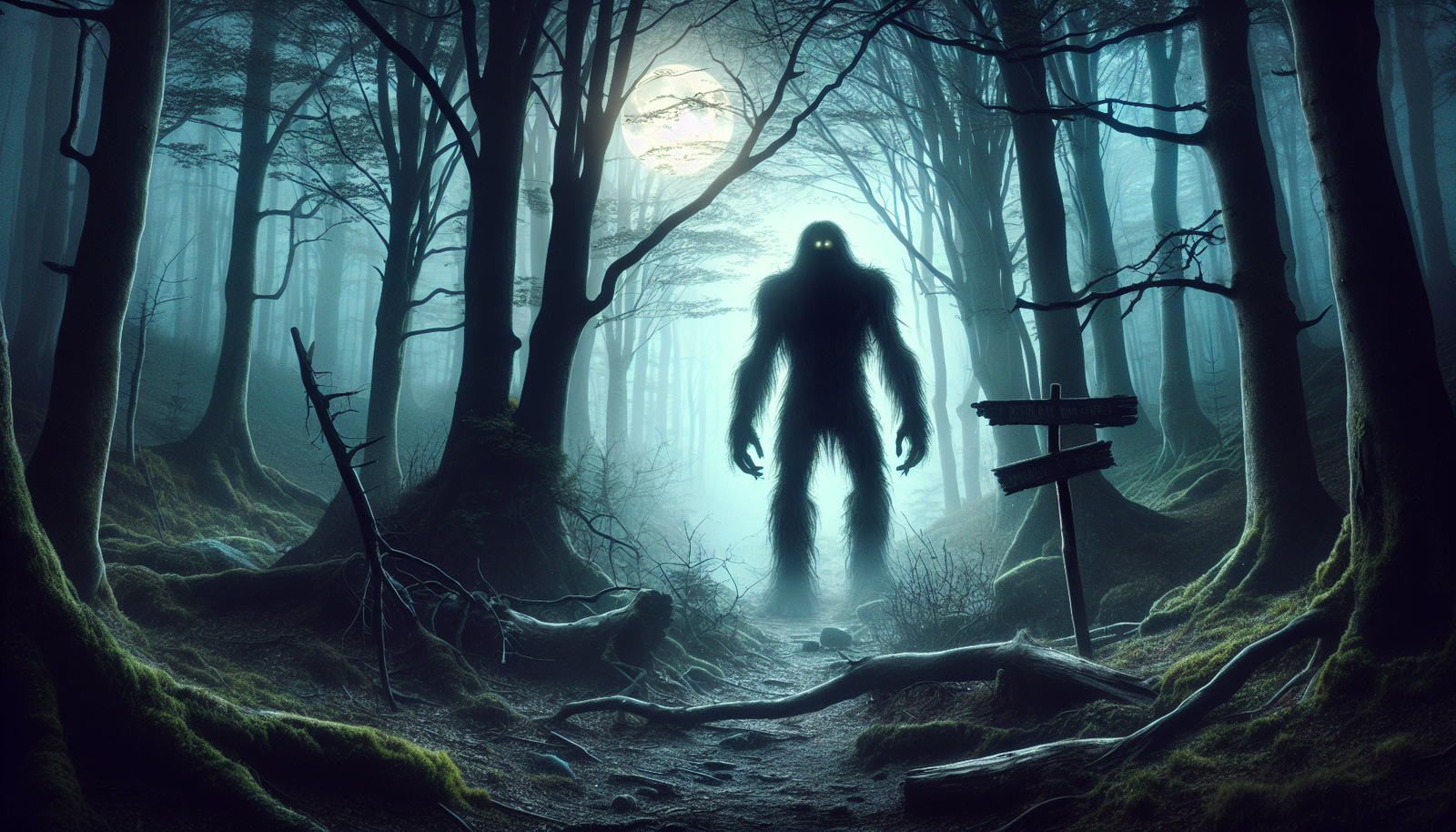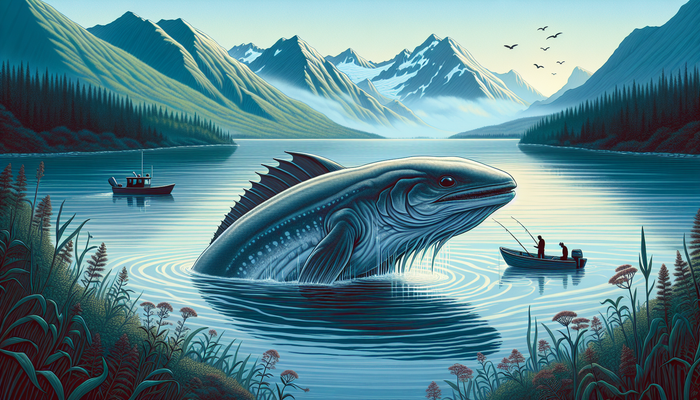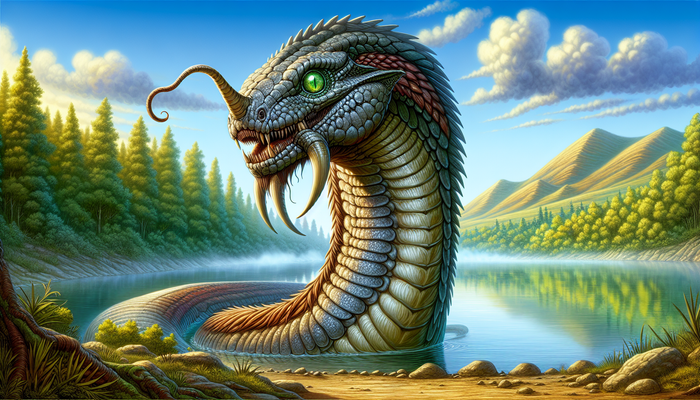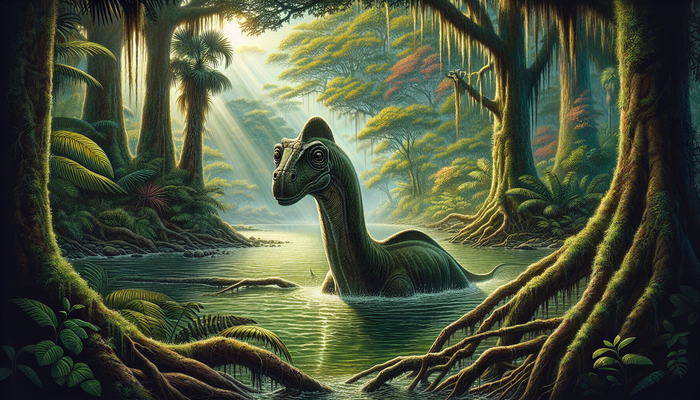Unmasking the Mysteries: Decoding the Elusive World of Cryptids

By Dr. Elizabeth Harper, Cryptozoologist and Biologist
In the shadowy corners of our collective imagination, there lurk creatures that defy explanation—beings that inhabit the murky realm between myth and reality. These enigmatic entities, known as cryptids, have captivated the human psyche for centuries, sparking both fear and fascination in equal measure. As a seasoned researcher in the field of cryptozoology, I have dedicated my life to unraveling the mysteries surrounding these elusive creatures. In this article, we will embark on a journey to define and explore the world of cryptids, delving into their histories, cultural significance, and the enduring allure they hold over our imaginations.
What are Cryptids? Defining the Undefinable
At its core, the term "cryptid" stems from the Greek word "kryptos," meaning "hidden" or "secret." In the context of cryptozoology, a cryptid is an animal whose existence is unproven, with eyewitness accounts and anecdotal evidence serving as the primary basis for their alleged existence.
Cryptids are characterized by a distinct set of attributes that set them apart from their confirmed animal counterparts:
- They lack concrete scientific proof, despite numerous sightings and encounters reported by witnesses.
- They are often described as large, fearsome, and possessing an air of the uncanny—they may exhibit humanoid features or resemble exaggerated versions of known animals.
- These creatures are typically associated with remote, inaccessible regions, such as dense forests, uncharted waters, or isolated mountain ranges.
The study of cryptids falls under the domain of cryptozoology, a field that remains on the periphery of mainstream biology. Cryptozoologists rely heavily on eyewitness testimonies, historical accounts, and circumstantial evidence in their pursuit of these hidden animals. While some researchers approach the subject with a degree of skepticism, others are driven by a fervent belief in the existence of these creatures and a desire to validate their reality through rigorous investigation.
It is important to note that cryptids exist on a spectrum, ranging from sightings of out-of-place animals to encounters with mythical humanoids and supernatural entities. On one end of the spectrum, we find reports of big cats roaming the British countryside or tales of large, unidentified primates in North America. These cryptids, while extraordinary, are not beyond the realm of biological possibility. On the other hand, creatures like the Mothman or the Jersey Devil venture into the domain of the paranormal, blurring the lines between flesh and fantasy.
Famous Cryptids and their Histories
Among the myriad of cryptids that have captured the public's imagination, a select few have achieved legendary status, their names synonymous with mystery and intrigue. Let us delve into the histories of these iconic creatures and explore the tales that have solidified their place in cryptozoological lore.
Sasquatch/Bigfoot
The legend of Sasquatch, also known as Bigfoot, is deeply rooted in the indigenous folklore of the Pacific Northwest. For centuries, Native American tribes have recounted stories of large, hairy, humanoid creatures inhabiting the dense forests of the region. These beings, known by various names such as "Ts'emekwes" or "Skookum," were often depicted as powerful, elusive, and possessing a deep connection to the natural world.
Bigfoot catapulted into the mainstream consciousness in the 1950s, thanks in part to a series of footprint casts and the infamous Patterson-Gimlin film. This short, grainy footage, captured in 1967 by Roger Patterson and Bob Gimlin, purportedly shows a large, bipedal creature striding through the forests of Northern California. Despite decades of analysis and debate, the authenticity of the film remains a topic of fierce contention among researchers and skeptics alike.
In the years since, Bigfoot has become a cultural icon, inspiring countless sightings, hoaxes, and a thriving subculture of enthusiasts and researchers. From organized expeditions to amateur investigations, the search for Sasquatch has taken on a life of its own, fueled by a mix of genuine curiosity and a desire to prove the existence of this elusive creature.
Loch Ness Monster
The murky depths of Scotland's Loch Ness have long been associated with tales of a mysterious creature lurking beneath the surface. The legend of the Loch Ness Monster, affectionately known as "Nessie," can be traced back to ancient Scottish folklore, which spoke of water horses and other aquatic beasts inhabiting the region's lochs and rivers.
However, it was not until the 1930s that the modern legend of Nessie truly took hold. In 1934, the infamous "Surgeon's Photo" surfaced, purportedly showing a long-necked creature emerging from the loch. The photograph, which was later revealed to be a hoax, nonetheless sparked a frenzy of interest in the Loch Ness Monster and cemented its place in popular culture.
Over the years, numerous sightings, sonar readings, and photographic evidence have been put forth as proof of Nessie's existence. While most of these claims have been debunked or remain inconclusive, the allure of the Loch Ness Monster persists. Today, Nessie serves as an enduring symbol of the unknown and a major tourist attraction, drawing visitors from around the world to the shores of Loch Ness in hopes of catching a glimpse of this elusive creature.
Chupacabra
The legend of the Chupacabra, a cryptid whose name translates to "goat sucker," originated in Puerto Rico in the mid-1990s. The first reported sightings described a bizarre, reptilian creature with glowing red eyes and a row of spines running down its back. Eyewitnesses claimed that this creature was responsible for a series of brutal attacks on livestock, particularly goats, which were found drained of blood with peculiar puncture wounds on their necks.
As news of the Chupacabra spread, sightings began to emerge throughout Latin America and the southern United States. Descriptions of the creature varied, with some accounts portraying it as a hairless, canine-like beast, while others attributed more extraterrestrial features to it. The Chupacabra's alleged connection to UFO activity and the paranormal further fueled the public's fascination with this enigmatic predator.
Despite numerous investigations and alleged captures of the Chupacabra, the true nature of this cryptid remains a mystery. Some researchers suggest that sightings can be attributed to diseased or mangy coyotes, while others maintain that the Chupacabra represents a yet-undiscovered species. Regardless of its origins, the Chupacabra has become a cultural icon, featuring prominently in folklore, popular media, and the collective imagination of Latin America and beyond.
Mothman
In the mid-1960s, the town of Point Pleasant, West Virginia, became the epicenter of a series of bizarre occurrences and sightings that would give rise to the legend of the Mothman. Eyewitnesses described encounters with a large, winged humanoid creature with glowing red eyes, standing over six feet tall. The Mothman was said to possess the ability to fly at incredible speeds and was often spotted in the vicinity of the abandoned TNT plant on the outskirts of town.
The Mothman's notoriety reached new heights in the wake of the tragic collapse of the Silver Bridge in Point Pleasant on December 15, 1967. The disaster, which claimed the lives of 46 people, was later linked to the Mothman sightings by some researchers who suggested that the creature's appearance served as a harbinger of impending doom.
The legend of the Mothman has since become a staple of paranormal lore, inspiring books, movies, and an annual festival in Point Pleasant. Some theories propose that the Mothman is an extraterrestrial being or a manifestation of interdimensional energy, while skeptics argue that the sightings can be attributed to misidentifications of large birds or the effects of mass hysteria.
Other Notable Cryptids
Beyond the iconic cryptids discussed above, there exists a vast array of lesser-known, yet equally intriguing creatures that have captured the attention of researchers and enthusiasts alike:
- The Jersey Devil, a winged, hoofed creature said to haunt the Pine Barrens of New Jersey, has been a staple of local folklore since the 18th century.
- Mokele-mbembe, a sauropod-like creature rumored to inhabit the Congo Basin, has drawn comparisons to living dinosaurs and has been the subject of numerous expeditions.
- The Mongolian Death Worm, a large, venomous worm-like creature said to inhabit the Gobi Desert, has been described in local legends and remains a topic of fascination for cryptozoologists.
It is worth noting that some animals, once considered cryptids, have since been confirmed to exist. The giant squid, for example, was long regarded as a mythical creature until the first live specimen was captured on film in 2004. Similarly, the Thylacine, or Tasmanian Tiger, was thought to be extinct until alleged sightings in recent decades sparked renewed interest in its possible survival. These examples serve as a reminder that the line between cryptid and confirmed species is not always clear-cut and that the pursuit of these elusive creatures can sometimes yield surprising discoveries.
Explanations: Hiding in Plain Sight?
As we delve deeper into the world of cryptids, it is essential to consider the various explanations put forth to account for these mysterious sightings and encounters. While some researchers maintain that cryptids represent undiscovered or unrecognized species, others propose alternative explanations that challenge the notion of their physical existence.
One prevalent theory suggests that many cryptid sightings can be attributed to the misidentification of known animals. In the case of Bigfoot, for example, some experts argue that eyewitnesses may have mistaken bears, apes, or even humans for the legendary creature. Similarly, out-of-place animals, such as escaped exotic pets or species that have ventured beyond their typical ranges, can give rise to cryptid reports. Poor visibility, fleeting glimpses, and the effects of fear and adrenaline can further contribute to the misinterpretation of these encounters.
Hoaxes and publicity stunts also play a significant role in perpetuating the legend of certain cryptids. Throughout history, individuals have fabricated evidence, such as footprints, photographs, and even staged carcasses, in an attempt to garner attention or profit from the public's fascination with these creatures. The Patterson-Gimlin film, for instance, has long been subject to accusations of being an elaborate hoax, with some researchers pointing to inconsistencies in the creature's gait and appearance as evidence of its inauthenticity.
Psychological factors, such as hallucinations and pareidolia, may also contribute to cryptid sightings. Pareidolia refers to the human tendency to perceive familiar patterns or shapes in ambiguous stimuli, such as seeing faces in clouds or animals in rock formations. In the context of cryptids, this phenomenon may lead individuals to interpret shadows, tree branches, or other natural elements as humanoid or animal-like figures. Additionally, altered states of consciousness, induced by fatigue, fear, or intoxication, can give rise to vivid hallucinations that are later reported as cryptid encounters.
The human factor cannot be overlooked when examining the origins of cryptid legends. Eyewitness testimony, while compelling, is notoriously unreliable, as memories can be distorted by time, emotion, and the influence of external factors. Cultural expectations and the power of suggestion can also shape the way individuals interpret and recount their experiences, leading to the reinforcement of preexisting beliefs about cryptids.
Moreover, the desire to believe in the extraordinary and the willingness to suspend disbelief can contribute to the persistence of cryptid legends. In a world that is increasingly explained by science and technology, the allure of the unknown and the possibility of creatures that defy conventional understanding holds a powerful sway over the human imagination.
Cryptids in Culture: Symbols of the Shadows
Beyond their status as biological curiosities, cryptids have long held a significant place in human culture, serving as potent symbols of the unknown and the untamed. These creatures have captured the imagination of people across the globe, weaving themselves into the tapestry of folklore, mythology, and popular media.
Cryptids have a rich history in the oral traditions of indigenous cultures worldwide. In the Himalayas, tales of the Yeti, or Abominable Snowman, have been passed down for generations, with the creature often depicted as a guardian of the mountains and a symbol of the harsh, unforgiving landscape. Similarly, the Almas of Central Asia and the Mokele-mbembe of the Congo Basin have deep roots in local folklore, embodying the mysteries and dangers of the wild.
In many cultures, cryptids take on the role of shapeshifters, beast-men, and supernatural entities, blurring the lines between the human and the animal, the natural and the paranormal. These creatures often serve as cautionary tales, warning of the consequences of venturing too far into the unknown or transgressing the boundaries of the human realm.
From a Jungian perspective, cryptids can be seen as manifestations of the "shadow" archetype—the repressed, primitive aspects of the human psyche that we seek to deny or control. These creatures embody our deepest fears and forbidden desires, challenging the boundaries between the civilized and the wild, the self and the other. By confronting these shadowy figures, we are forced to grapple with the darker aspects of our own nature and the limits of our understanding.
In modern times, cryptids have found a prominent place in popular culture, featuring in countless books, movies, television shows, and video games. From the classic horror films of the 1950s to the found-footage thrillers of the 21st century, cryptids have served as a source of endless fascination and terror for audiences worldwide. Documentary series and reality shows have further fueled the public's interest in these creatures, offering tantalizing glimpses into the world of cryptozoological research and investigation.
The allure of cryptids has also given rise to vibrant subcultures and communities of enthusiasts. Cryptozoology conventions, such as the annual Mothman Festival in Point Pleasant, West Virginia, bring together researchers, witnesses, and fans from around the world to share their experiences and theories. Cryptid-themed tourist attractions, such as the International Cryptozoology Museum in Portland, Maine, offer visitors a chance to immerse themselves in the lore and history of these enigmatic creatures.
For some, the pursuit of cryptids is more than a passing interest—it is a way of life. Cryptozoologists and amateur investigators dedicate countless hours to researching, tracking, and documenting evidence of these elusive creatures. The search for cryptids becomes a quest for meaning, a way to connect with the mysteries of the natural world and to push the boundaries of human knowledge.
The truth behind cryptids remains as elusive as the creatures themselves. While some sightings and encounters may be explained by misidentification, hoaxes, or psychological factors, others continue to defy conventional explanations. As we delve deeper into the world of cryptids, we are forced to confront the limits of our understanding and the possibility that there may be more to this world than meets the eye.
In the end, perhaps the true significance of cryptids lies not in their physical reality, but in what they represent to us as a species.
From Bigfoot to UFOs: Hangar 1 Publishing Has You Covered!
Explore Untold Stories: Venture into the world of UFOs, cryptids, Bigfoot, and beyond. Every story is a journey into the extraordinary.
Immersive Book Technology: Experience real videos, sights, and sounds within our books. Its not just reading; its an adventure.



























